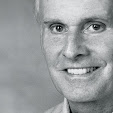(Revised October 10, 2016) How many of Chicago's 2.7 million residents have ever heard of Strengthening Chicago's Youth (SCY)? Perhaps 100,000 at most. That's a big number, but its small when you realize that it's also telling us that only one out every 27 Chicagoans has heard of SCY. If you're among that huge number, you have heard of Lurie Children's Hospital, SCY's parent organization. So why is SCY important? In recent years its small but energetic staff has convened hundreds of government, community and non-profit organizations in an ongoing series of quarterly meetings that have done more to advance citywide understanding and solutions to Chicago's violence problem than any other actual or virtual platform I can think of.
Today, for instance, SCY will host a three-hour meeting on the following topic:
Looking at this topic, I wondered when Chicago will get around to talking about Citywide lessons to be learned about Sharing Data for Violence Prevention. We'll get to that. But first, here are the four speakers who will discuss the three projects features in today's meeting, with links to their websites.
Problem is, all too few Chicagoans get to hear speakers like these. That's because Chicago's civic discourse system is NOT structured to provide citizens with the information they need to end violence in their neighborhoods. News coverage of Chicago's efforts to end violence consists for the most part of editorial blaming of city officials for something gone wrong or of news reports on city leaders pointing fingers at each other. This practice, continued year in and year out, only sows and nurtures seeds of mistrust and alienation from government.
Sadly, what passes for civic discourse in Chicago is for the most part an insider affair designed to engage a tiny group well-heeled and well-connected insiders willing to pay $30 or $40 to hear a public official talk about violence at a City Club of Chicago event or one sponsored by Crain's or Chicago Tribune event. Never do these 'civic' events air radio or TV where all 2.7 Chicagoans might hear them. The exception, of course is the televised election-time debates during which the search for solutions is almost entirely displaced in favor of name-calling and blame-gaming..
Over time this endless soap opera has turned hundreds of thousands of Chicagoans into passive spectators of a political farce that has left them voiceless in the citywide search for solutions to violence here. Chicago's children - potentially the city's most crucial asset in coming to terms with gun, gang, police and youth violence - come of age in this cynical, sorry spectacle. As Mary Mitchell recently noted her piece in the Chicago Sun-Times on the numbing effect of violence on the young, "74 percent of youth [in urban communities] have witnessed a shooting".
Everyone, including our mayors and police chiefs, gives lip service to idea that Chicago's violence will never be solved without broad community support. But how can Chicago generate that support in climate of universal mistrust and fear? Today's SCY session could easily reach a citywide audience of some 30,000 viewers if only it were telecast citywide on Chicago Access Network TV. So it's puzzling that SCY has yet to make productive use of this low-cost and effective resource.
With TV in mind, let's take a quick look at Chicago's mainstream TV station Channels 2, 5, 7, 9, 11 and 12. When we do, it's not hard to see how dynamic, prime-time public forums that are unshakably committed to reducing violence and to listening to all Chicagoans would instantly attract huge audiences. Imagine an ongoing, citywide, citizen-participatory search citywide search for solutions to violence, airing prime time Sunday evenings for several months. These public forums would be radically different from anything Chicagoans (or Americans) have ever seen on TV. Their search for solutions would be as exciting as the Cubs' quest for the World Series.
The time is fast approaching when TV stations and newspapers will open their eyes and realize how much money they can make by creating these dynamic public forums. Money. Money often breeds corruption. But it doesn't have to be that way.
In coming posts, we'll show why we're convinced that media's wisest and most profitable approach to politics will be to with dialogic public forums that make citizens and governments responsive and accountable - truthful - with each other in the search to solve systemic problems like violence. Why so? Just think back to last November and the release of the Laquan McDonald video and ask yourself how things have changed since then. That video - its release to the public - opened a new era in Chicago. It gave us Black Lives Matter and a whole focus on police/community relations. It opened an era that will be driven by technological revelations coming from police dashcams, bodycams and cell phone videos. And driven also by the DNA evidence that's reversed scores of wrongful criminal convictions. In politics, fact-checking sites are on the rise. Then there's the Edward Snowdon and Wikileaks revelations that have opened huge windows into government matters formerly hidden from Americans. Sooner or later, the slow-motion instant replays that add credibility to refereeing in sports telecasts are bound to find their way into a system of political discourse that has lost credibility at all levels of government in America.
All told, it's by judicious use of these and many other modern interactive communications technologies that Chicagoans and City Hall, working together as never before in Chicago history, will perforce have to depend on each other in deciding how Chicago can best run itself. We have entered the Era of Interdependence. Over a hundred years ago. Chicago's great city planner Daniel Burnham designed a physical infrastructure. If Burnham were with us today, he would see the development of a public communications infrastructure, accessible to all Chicagoans, as best and only way for Chicago to shape its future in an age of electronic communications.


